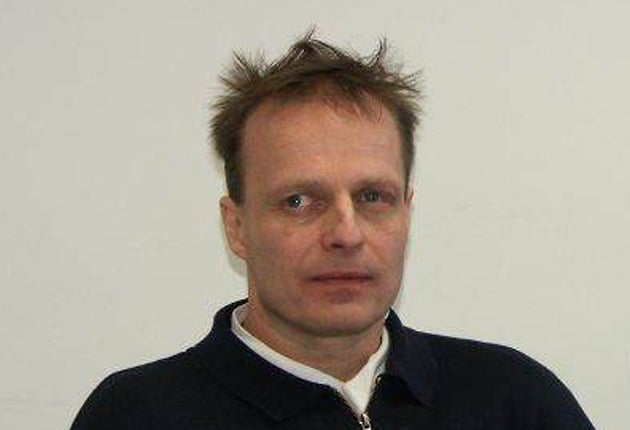Pioneering retina chip helps blind patients see

Your support helps us to tell the story
From reproductive rights to climate change to Big Tech, The Independent is on the ground when the story is developing. Whether it's investigating the financials of Elon Musk's pro-Trump PAC or producing our latest documentary, 'The A Word', which shines a light on the American women fighting for reproductive rights, we know how important it is to parse out the facts from the messaging.
At such a critical moment in US history, we need reporters on the ground. Your donation allows us to keep sending journalists to speak to both sides of the story.
The Independent is trusted by Americans across the entire political spectrum. And unlike many other quality news outlets, we choose not to lock Americans out of our reporting and analysis with paywalls. We believe quality journalism should be available to everyone, paid for by those who can afford it.
Your support makes all the difference.Revolutionary surgery has helped three blind patients to see again, following the implantation of an artificial retina in an operation which brings hope to thousands of people who have lost their sight.
The two men and a woman could distinguish shapes and objects days after the experimental treatment which involved placing an electronic chip at the back of the eye.
The development is a significant advance on previous attempts to produce a bionic eye, which have relied on a camera and transmitter fitted to a pair of glasses to transmit images to the artificial retina. The new technique relies on the eye itself to transmit the images.
One of the men, 44-year-old Mikka Terho from Finland, was able to identify objects such as a banana and distinguish between a fork, knife and spoon. He could walk around a room without bumping into obstacles, read a clock face and differentiate seven shades of grey.
The three patients were among 11 in the trial who had been blind for at least five years, after losing their sight due to a condition called retinitis pigmentosa, an inherited condition that destroys the retina and which affects an estimated 20,000 people in the UK. The trial was carried out in Germany using a device made by Retinal Implant. Following its success, a UK trial is to follow next year involving six to 12 patients who will be treated at the Oxford Eye Hospital and Kings College Hospital, London.
Robert MacLaren, professor of ophthalmology at the University of Oxford, who will lead the UK trial, said yesterday: "This represents a major advance in this technology. One previously blind patient was able to read his own name. Until now this would have been considered only in the realms of science fiction. The device is implanted under the retina and it stimulates the retinal nerves in exactly the same way as they would be in a normal person. The eye moves around naturally. An image is formed from the implant in exactly the same way as it would have been before."
An ultra-thin light-sensitive chip, 3mm square, is inserted at the back of the eye under the existing retina. Light hitting it generates a pixillated image which is boosted by an external power source worn behind the ear and connected via a cable that runs under the skin to the eye. Signals from the device stimulate remaining nerves in the retina which are transmitted to the brain.
The trial, reported in Proceedings of the Royal Society B, was carried out in patients with no residual vision who had nothing to lose. But if it proves successful it could be applicable to a wider population.
Professor MacLaren said: "What we are talking about here is the next generation of implantable devices. The technology could be applicable to anyone who has lost their sight owing to degeneration of the photoreceptors, such as age-related macular degeneration. There are still many questions such as how long the chip will last and how it might be improved."
Case study
Mikka Terho was diagnosed with retinitis pigmentosa in 1992 at age 28. In 2008, he was implanted with a retinal chip in his left eye.
Initially, he could only see dots, but was later able to identify vertical and horizontal lines, form letters into words and correct the spelling of his name.
"The best feeling was that I could see something in the centre of my eye," he said.
"It takes time for your eyes to adjust. My brain was getting used to reading the messages, like learning to walk again after being paralysed."
Join our commenting forum
Join thought-provoking conversations, follow other Independent readers and see their replies
Comments